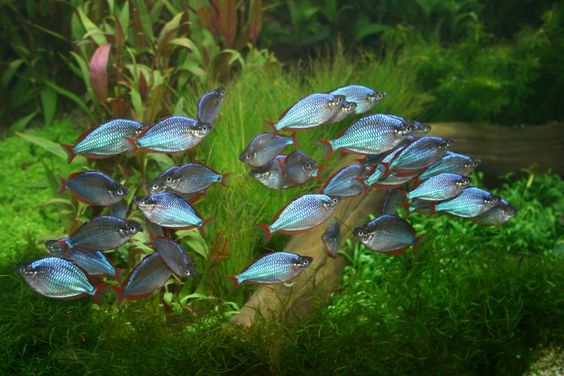A sudden spike in ammonia levels can be a cause for concern for any aquarist. This event can be even more alarming in a cycled tank, as it can indicate a problem with the nitrogen cycle. They can occur when the tank is first set up, when the filter media becomes saturated, or when there is a sudden increase in the number of fish in the tank.
Ammonia to Nitrogen cycle in fish tank
While there are many potential causes for an ammonia spike, some of the most common include an overfeeding, dirty substrate, and dead fish. If left unchecked, these problems can quickly lead to tank disaster.
In order to prevent a sudden spike in ammonia, aquarists have to know all of the common facts related to ammonia spikes in cycled tanks. Continuing with this write-up, you will get the information and solution you need to know.
What are the signs of ammonia stress in a tank?
Ammonia stress is a common problem for fish tanks. It can cause major health problems for the fish in the tank, and it is often difficult to treat. There are several signs that can indicate ammonia stress in a tank.
One of the most common signs is red streaks on the fish’s body. You may find your fish with torn or clamped fins. Another sign is that the fish may be swimming erratically or resting at the bottom of the tank.
Other than those, the gills may also be red and inflamed, and the fish may have trouble breathing. Whenever you notice any of these signs, it is important to take action to address the ammonia stress.
What causes ammonia to spike in a cycled tank?
To many fish in one tank can be a reason of ammonia spike
There are many potential causes for an ammonia spike in a cycled tank. One of the most common reasons is overfeeding.
When you put too much food into the tank, the bacteria in the filter can’t break it all down, and the excess food will decompose and create ammonia.
Another common cause of spikes is dirty filters. If the filter isn’t cleaned often enough, it will become clogged with dirt and debris, which will reduce its ability to process ammonia.
A third common reason for spikes is insufficient aeration. If there isn’t enough oxygen in the water, the bacteria that break down ammonia won’t be able to function properly, leading to a spike.
Finally, changes in pH levels can also cause ammonia spikes. As we know, pH indicates the acid-base equilibrium in the water; changing its level certainly indicates an imbalance of acid-base proportion in your water tank. That may be a sure sign of ammonia overspread.
How high does ammonia get during the cycle?
Ammonia levels will vary depending on the tank size and the stocking level, but they can reach quite high levels. In a small tank with a few fish, ammonia levels can reach 5 ppm (parts per million). In a larger tank with more fish, levels can go up to 10 ppm or even higher.
It’s important to keep an eye on ammonia levels during the cycling process and take steps to reduce them if they get too high. Always try to keep this level as optimum as possible. High ammonia levels can be fatal for your fish health.
How long does ammonia spike last?
The duration of an ammonia spike can vary depending on the severity and cause. It also depends on the fish tank size and the number of abiders. In many cases, it will only last for a day or two.
However, if there is a significant increase in waste production, the spike may last for several days or even weeks. If you’re experiencing an ammonia spike, it’s important to take steps to address the issue as soon as possible.
How do you fix ammonia spikes in an aquarium?
Adding plants to your fish tank is superb way to balance ammonia cycle
There are several ways to avoid ammonia stress in a tank, including proper stocking levels, frequent water changes, and using an ammonia detoxifier.
The first step in avoiding ammonia stress is to maintain proper stocking levels. The ideal number of fish for a tank depends on what type of fish is being kept, with larger fish requiring more nitrogenous waste as they consume more food and grow.
If your tank is overloaded with various types of fish, it is also recommended to allow some of them another space. You can also choose some plants that are known as ammonia eaters to balance the ammonia spike naturally. Pothos, Java Moss, and Frogbit are popular choices in this case.
Moreover, proper cleaning, filtration, and a good food distribution chain will help you keep the ammonia level optimum.
Conclusion
It’s important to keep an eye on ammonia levels during the cycling process and take steps to reduce them if they get too high. If left unchecked, high ammonia levels will prove to be a life threat to your fish.
And prevention is the best way to deal with ammonia spikes. This process may include doing more frequent water changes, using chemical filtration media such as activated carbon, or using a protein skimmer. By following the suggestions for dealing with ammonia spikes in a cycled tank, you can help keep your tank healthy and thriving.
Related Posts:
